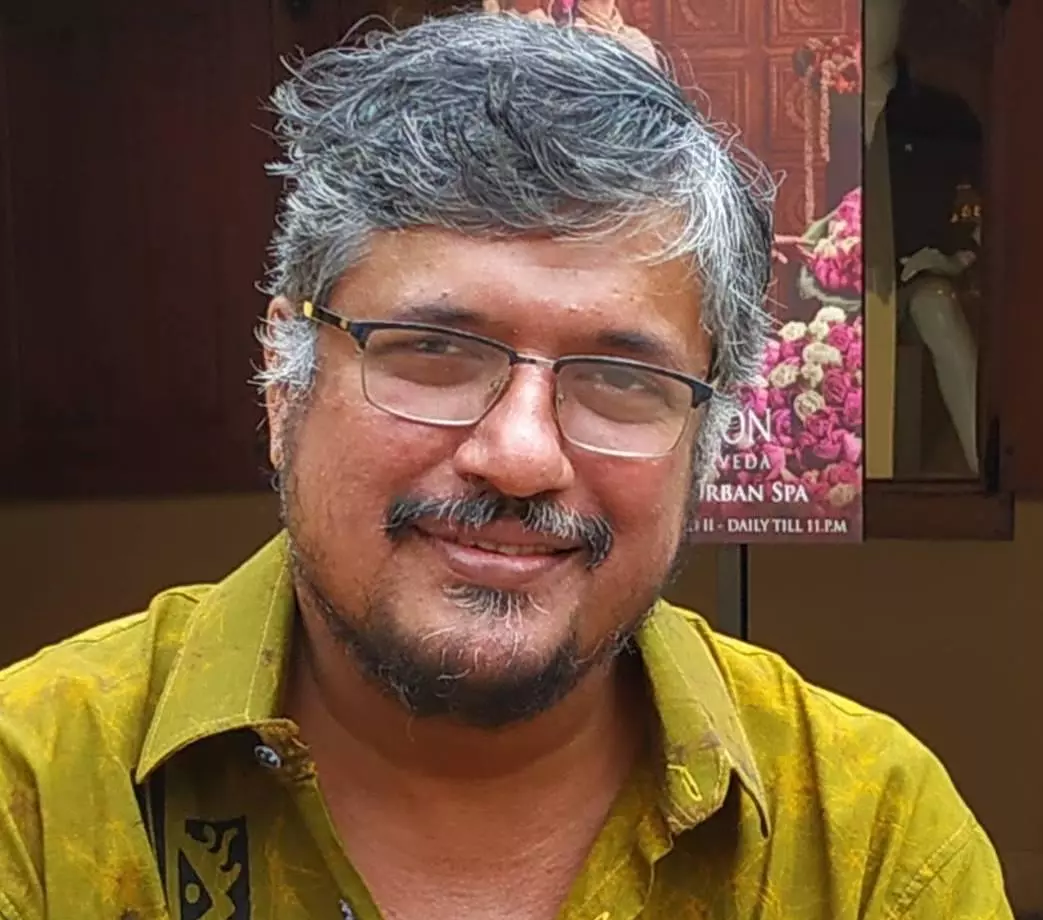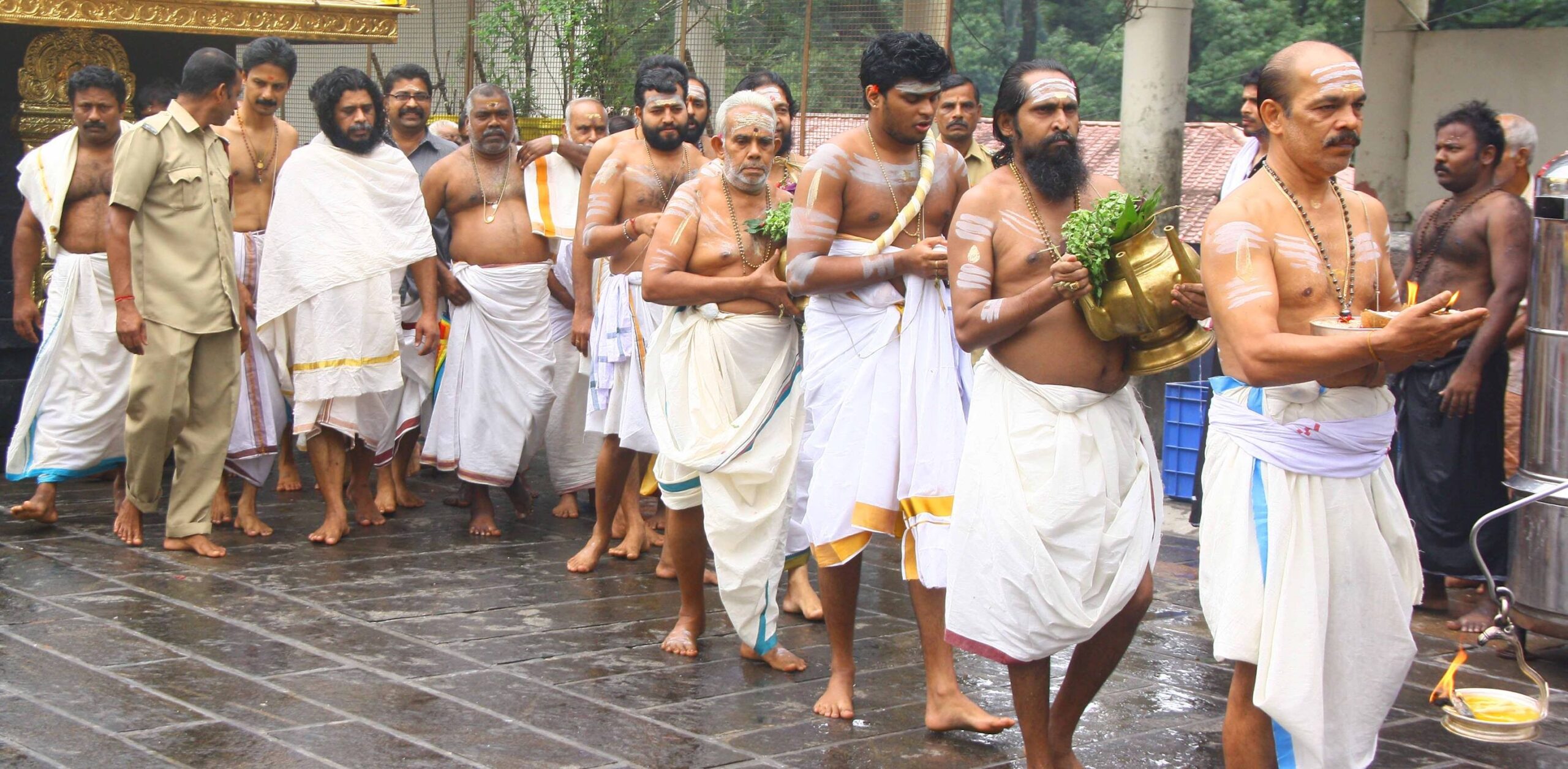
From Acharam to Knowledge: Claims of Caste Dominance in Twentieth-century Malabar
Exploring the caste practices of Namboothiris (Kerala Brahmins) in the first half of the twentieth century, this paper by Sunandan K.N analyses the transformation of Brahminical claims of superiority over other castes, in interaction with colonial knowledge practices.
The paper maps the historical process by which claims of Brahminical superiority transformed from ritual to knowledge—from claims based on acharam (the daily practices of rituals) into a claim of possession of traditional knowledge. By analysing the upper caste world of Namboothiris, the aricle explores the tension between emerging order of colonial knowledge and the existing order of acharam. The paper shows that until the reform movement in the 1920s, Namboothiris as a community were not part of either traditional or colonial knowledge practices. Even in the reform movement the attempt was not to wholeheartedly enter into the domains of knowledge but to incorporate the elements of acharam into the order of colonial knowledge.
Part One
17 Minutes Read
Introduction
The claims of superiority by nations, races and castes always accompany a constructed past where these claims find justifications. It is a common sense in scholarship that often these histories as constructed pasts change according to the needs of the historical present and new histories are constructed to match these requirements. In India, the claim that Brahmins were the authority of traditional knowledge and it is this authority that resulted in their dominance is such a claim. It is accompanied by descriptions of Vedas and other Sanskrit texts explained not only as the source of traditional knowledge but as texts which contained all important modern scientific knowledge. This paper positions the changing claims of dominance by Brahmins in the historical context by explaining the social processes that necessitated the changes in the claims of domination.
Anthropologists and historians have explained the Brahminical domination in India in relation to their economic, political and ritualistic power. The European scholars of the colonial period generally explained the Brahminical domination citing the ‘spiritual nature’ of Hindu society and the importance of Brahmins in the ritual practices based on Vedic knowledge. Moving away from this Orientalist paradigm of religious ideology of caste, M.N. Srinivas and Louis Dumont, in the beginning of the second half of the twentieth century, raised serious questions regarding power and status in relations to the dominance of a caste in a locality. Srinivas in his early work on dominant caste explained that ‘a caste may be said to be “dominant” when it preponderate numerically over the other castes and when it is also wields preponderant economic and political power’. In a later work Srinivas observed that ‘important as the secular criteria are, ritual superiority has an independent existence and power of its own’. He added that on secular criteria alone a Brahmin may occupy a very low position, but he is still a Brahmin and as such entitled to respect in ritual and pollution context.

Dumont made a distinction between power and status in which the former is dominance in the realm of political and the latter in the domain of spiritual. He further noted that the extension of the term ‘dominance’ to the religious level seems even less defensible than the extension of ‘status’ to the non-religious level. Whereas on the present view it is absolutely necessary to distinguish clearly, in the very terminology, between these two levels, we have noted that in certain conditions power scrumptiously becomes the equal of status.
For Dumont spiritual aspects were important but he categorised that domain separated from the realm of political. In a different context, in the analysis of the emergence of Indian nationalism in Bengal, Partha Chatterjee also brought an analytical division between the realm of material and spiritual, where the national elites (mostly the upper castes) of India made different kinds of claims regarding power and autonomy. Chatterjee argued that in the material realm the nationalist accepted the dominance of Western discourses whereas in the realm of spiritual they claimed autonomy and dominance. In short, in both Dumont and Chatterjee, the claims of upper-caste dominance have differed in the material/political and spiritual domains.
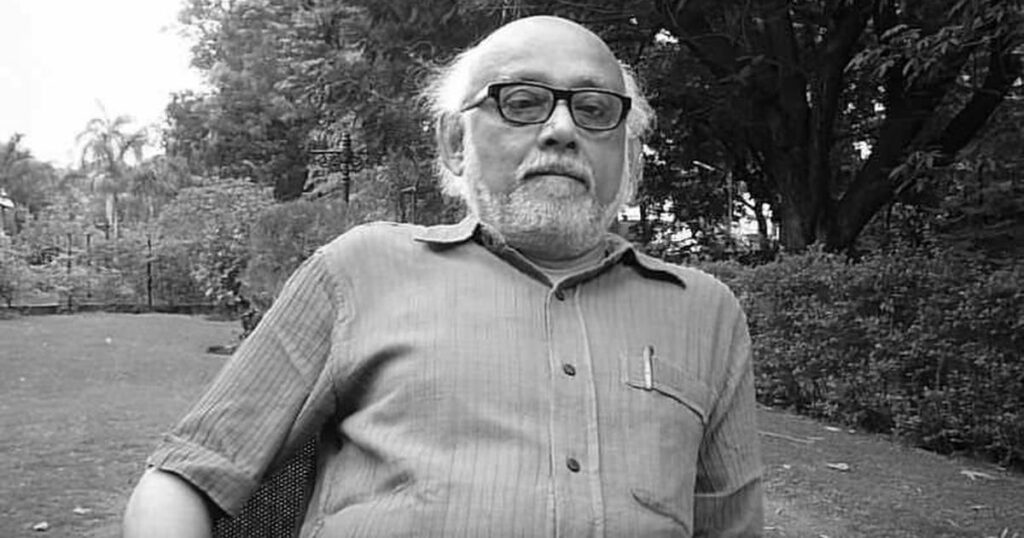
M.S.S. Pandian in his work on the non-Brahmin movement in Tamil Nadu pointed out that the domain of spiritual always extended to the domain of politics and hence both of these should be considered as hybrid spaces. The claim of ritual purity by Brahmins, for example, was extended to the claims of dominance in the public spaces. This paper attempts to situate the above claims and the transformations in these claims of dominance in the context of the emergence and dissemination of colonial knowledge in the second half of the nineteenth and early twentieth century. Both the concept of the material versus spiritual domain and hybridity are insufficient to explain the transformations took place in the nature of claims of dominance during the colonial period. It is true that there were always multiple factors that made a caste dominant, but there was always a central aspect around which the claims of superiority were made, although that too changed historically. I use two categories, the order of acharam and the order of knowledge to mark these transformations. These categories will be explained in detail in the later part of this paper but it should be noted here that an order of knowledge which emerged in the colonial condition gradually replaced the order of acharam, the change which has a critical role in the transformations of the claims of upper- caste dominance. In this conceptualisation neither acharam nor knowledge are located in a divided domains of material and spiritual.
In the nineteenth century, before an order of knowledge was established it was in the name of acharam that Namboothiris of Kerala claimed their higher status over other communities. Acharam, on the one hand, can be understood as the performance of ritual actions and, on the other hand, it was also the customary law that ordered the action of all caste communities. All actions of Namboothiris in their daily practices were ordered in reference to acharam. At this period Namboothiri actions cannot be categorised either as material one or as spiritual and in consequence the actions were not hybrids (in the sense that of a mixture or overlapping space of two different aspects or domains) as well. The Namboothiri community’s entry into the colonial order of knowledge in the 1920s transformed not only the concept of ritual, tradition, wealth and politics (in short acharam as it was practised in the nineteenth century) but also the daily life practices of the community or caste practices in general.
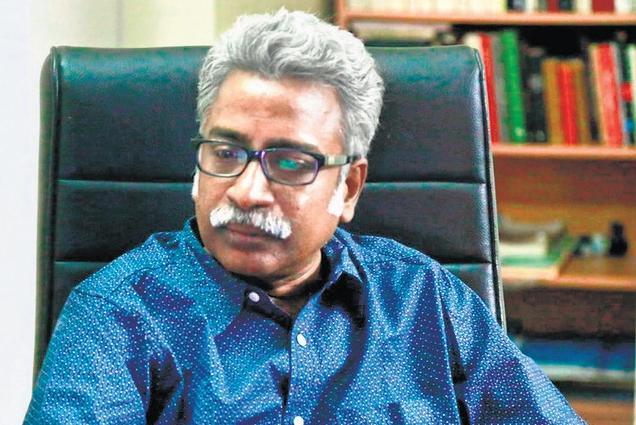
Dirks argued that it was in the process of colonial knowledge production that ‘caste has been constituted the principal modality of Indian society’. While this is an important contribution different from the earlier sociological and anthropological scholarship on caste, Dirks’ definition of the concept ‘political’ is a limited one. Throughout his analysis it is the activities of kings, rulers, political and social leaders, like Gandhi, Periyar and Ambedkar that constitute the realm of politics—in other words politics for Dirks—is situated in the public; public as defined within the colonial notion of divided spheres of public and private. His definition pays little attention to a large sphere of activities where the native communities contested, negotiated or adapted to the colonial construction of caste. This is important considering the fact that both in the colonial and postcolonial period caste is reproduced both through everyday life and public activities around caste. This is not to say that Dirk’s arguments about the construction of caste in the realm of political is invalid, but I want to add to his analysis by showing the importance of considering activities of both public and private realms simultaneously. The concept of acharam helps us to understand the politics that is the claims of dominance, without dividing its domain as public and private.
From our analysis of the practices of Namboothiris in Kerala, it becomes clear that until the context of the reform activities in the 1920s, their economic activities were part of the wider ritualistic practice, and conversely, their daily rituals were political as well as economic. I use the category acharam in order to overcome the separation of the activities in the domains of public and private and to explain both the claims of superiority and modes of domination. The anthropological studies in the 1960s and after, which explored the practices of Namboothiri community of Kerala, have noted the uniqueness of the practices compared to the Brahminical communities in other parts of India. At the same time most of these studies consider Vedas or other Sanskrit texts as the source and reference point for the practices. For example, Marjatta Parpola, who conducted very long and detailed ethnographic work in a Namboothiri family begin her analysis by placing Sankara Smruti, (supposedly a fourteenth-century Sanskrit text) as the reference point from which she explored the changes taking place in the daily practices of Namboothiris in the twentieth century. Parpola’s work could be considered an example of the scholarship in Indological tradition in which Vedic texts were always considered the central source to understand the Brahminical practices. Joan P Mencher, moving away from the textual interpretational method, analysed the various aspects of Namboothiri community using data from her fieldwork in the early 1960s. Her analysis situated the Namboothiri practices in the wider context of ecology, land relations and kinship systems.
Frits Staal, whose study focused on the actual practices of Brahmanical rites, has convincingly argued that neither these rites were purely religious nor the practitioners intended any specific meaning to the Mantras recited in these rituals. He explained:
A widespread assumption about ritual is that it consists in symbolic activities which refer to something else. It is characteristic of a ritual performance, however, that it is self contained and self absorbed. The performers are totally immersed in the proper execution of their complex tasks… Their primary concern, if not obsession, is with rules.
While Staal’s analysis helps us to understand ritual as a practice and action, his focus is limited to rites and hence the idea of ritual is explored only in that context. In my analysis I use the category acharam which could be roughly translated as ‘ritual’, but is a more overarching term that includes all kinds of daily activities of Namboothiri life. The discussion of sixty-four anacharams (unique acharam, supposedly prescribed in Sankara Smruti specifically for Kerala Brahmins) in the Namboothiri reform literature points towards the importance given to acharam as a guiding principle. Here acharam included a set of action and normative principles which determined individual actions in the spheres of economic, religious, social and political life. Acharam should be understood in the context of similar terms which were used to mention rules of practices in the daily life. For example, terms like mamool, or keezhkkade referred to precedence and rules formed from the earlier practices. Hence in the following analysis, acharam should be understood as an umbrella term which refers to both the prescriptions and the practices of Namboothiri life-world. In short, acharam determined the daily life of Namboothiris in the nineteenth century and enabled them to maintain their claims of superiority over other caste groups. I call this situation of domination attained through the forces of acharam as ‘order of acharam’.
Acharam and the Daily Life of Namboothiris
In the period of nineteenth century in a Namboothiri household, each and every activity in the daily life was a ritual or acharam. According to Nagam Ayya, a non- Malayalee Brahmin officer in Thiruvithamkoor who wrote the first manual of the princely state, the Namboothiri community gravitated towards acharam through strictly-followed daily rituals. Every action was a ritual and it was the proper performance of these ritualistic actions that constituted the jati (caste). The moment one broke a rule, it affected not only the person but the whole Namboothiri community and the order of things in the jati world.
In his three volume memoirs, Kanippayyoor Sankaran Nampoothirippad has recorded detailed descriptions of daily life in a Namboothiri household. A Namboothiri man wakes up from the bed looking eastwards. After a short prayer he directly goes to take a bath which is a long ritual. There are very specific rules regarding how to dip inside the water, how to dry oneself and what to wear after the bath. He will then proceed either to a temple or to worship the gods inside the house. This will take at least two to three hours, after which he will take his first meal. Eating, like other activities, is also a ritual guided by the principles of pollution and purity. After the meals he might engage in conversation with the fellow Namboothiri men in the house or with the Karyastan (manager of farming activities) or with the guests. There are strict guidelines regarding the varied use of language in conversations depending on the caste, age and gender status of the individuals engaged in the conversation. In the evening one has to take bath with a different set of rituals and after an early meal one would go to sleep after short prayers.
For a Nampoothiri girl and woman the day would start before sunrise. She will take a bath before the sunrise, which itself was an elaborate ritual, and do prayers and pujas for netumangalyam (long married life) which would take more than two hours. After that, she will cook food with other women in the house which should be ready by ten in the morning. She can eat only after the men and the children have finished their meals. Between this meal and the preparation for the evening puja, they read Bhagavatha or some other puranic texts or prepared materials for the evening puja. By around five, she would begin the evening prayers and immediately after that the preparation of evening food. Men usually ate about eight in the evening followed by the women. After the meal she will clean the kitchen, and the place where the deity was placed, where the Nair servants were not allowed to enter. Before sleeping she must recite some prayers for keeping evils and bad dreams away. In short, every action, waking up, taking bath, prayers, cooking, eating, washing vessels, taking rest, wearing, washing clothes or engaging in conversation is conducted in a predetermined and ritualistic manner controlled by the rules of pollution and purity.
J. Devika, in her analysis of reform narratives of the upper-caste communities in Kerala in the early twentieth century, noted that ‘within the illam (the Nampoothiri household) the relations between men and women and their everyday routines were carefully delineated’. She further added that ‘they (Nampoothiri women) were subjected to a strict and Spartan sartorial code, and as with almost everything else, even bedecking the body was subjugated to ritual purposes’. Devika also noted that ‘everyday life in illam was organized in a highly complex set of rules of conduct upholding various hierarchies’, however, ‘the very structure of regulation itself permitted potentially subversive spaces’. Hence the point is not that whether each and every individual followed the norms of acharam but that it was through the principles of acharam that Namboothiris decided whether an act is normal or subversive.
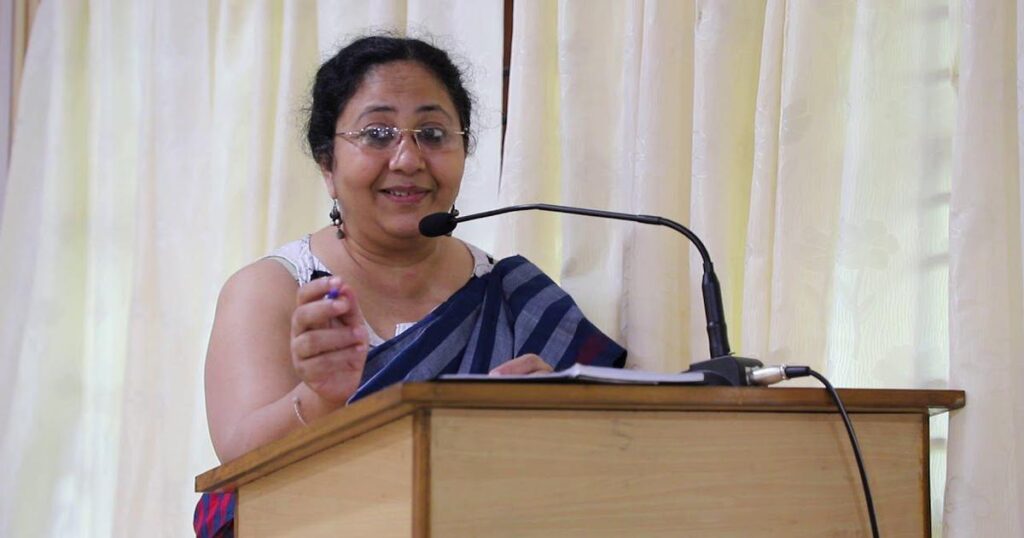
Even in the early twentieth century, acharam informed or directed not only the practices of Namboothiris inside the household but all their outside activities as well. It is in the name of acharam they claimed obligations from other castes and exploited the knowledge and labour of other castes in their benefit. The men and women from other castes conducted a number of physical jobs for Namboothiri illam in satisfying all the material needs of the household. Veluthedathu Nairs provided the pure cloths and Vilakathila Nair did the job of the hair dresser. Asaris (carpenters) did the maintenance work of the houses. People from the Cheruma/ Pulaya and Nair caste did all the agriculture work in the field and karyasthans from the Nair caste supervised the agriculture production. The people from the lower castes brought all agriculture products to the house of the Namboothiri landlord. Paddy was de-husked and made into rice by Nair women. The men and women from the Ampalavasi castes (temple servant castes) prepared materials for ritual worship. Namboothiris appropriated these obligations through acharam which were simultaneously economic and ritualistic. Even in Ayurveda practices in which a few Namboothiris from certain families were experts, Namboothiris as community generally depended on Vydyas (traditional medical practitioner) from other castes.
It is important at this point to emphasise the disconnect between acharam and knowledge. Scholars who made a connection between Vedic texts and Namboothiri practices, knowingly or unknowingly made this connection as a relation of Namboothiris with Vedic knowledge. The scholarship on caste and Brahminical ideology in India, understood acharam as a practice based on the prescriptions of Vedas and other Sanskrit texts. This interpretation was clearly a continuation of colonial understanding of written text as the only valid form of knowledge. By the end of the nineteenth century, the Sanskritic textual tradition attained a new status through colonial orientalist scholarship. This scholarship considered Vedas and other texts as the authentic texts which guided the Brahminical practices in India. Emerging disciplines like history reinforced the status of Vedas as the source of traditional knowledge in India. Later scholarship debated about the traditional knowledge around the question whether the Vedic tradition was a pure oral traditions or it was also based on written text. But in both the earlier colonial scholarship and in the later debate, the Sanskritic textual tradition was understood as the base of the Brahminical world.
Mapping the debate around the oral and written tradition, Fuller in agreement with Parry’s observations on the defective learning of Vedas in the oral tradition, confirmed that the ‘situation is undoubtedly widespread in India, so that for every Brahmin who knows his texts accurately, there are many others who are just winging it’. Even when recognising the performative aspects of the Veda learning, Fuller and others tend to consider the Brahmins responsible for the transfer of Vedic knowledge. Parry’s concern that ‘the authenticity of knowledge transferred purely by oral means can no longer be automatically accepted as axiomatic, comes from a premise that if Brahmins were reciting Vedas properly it could be considered as authentic knowledge. This assumption clearly stems from the orientalist notions of traditional knowledge.
In the period we are discussing, Namboothiris’ relation with language in general and with Vedas in particular did not match the above assumptions. Most Namboothiri boys and girls were initiated into language learning at the age of four or five through another ritual. Many of them learned how to write and read Malayalam and to do basic arithmetic. Teachers used puranic texts and prayers during this process. By this time, several publishers had started publishing printed texts of puranas and ithihasas and they sold these books through salesmen who travelled from house to house. The reading of these books became another ritual of the daily life of Namboothiris, especially women in the early twentieth century. Again, most readers were unaware about the meaning of the verses and even when they understood the meaning, their focus was on the recital itself. The objective of the reading was to attain punyam/ sukretham (blessings/welfare of the family) by the recital of the stories of gods. The girls had to discontinue their study once they attained puberty or even before that. The boys also had to stop the initial stage of learning once they became Namboothiris though the sacred thread ceremony after which they would start learning Vedas either at the special centres of Veda teaching, or under individual instructors. They never used their writing skills again in their life.
The learning of Veda recital was an in important part of the life of Namboothiri men whereas women were not allowed to learn Vedas. In the pre- colonial period there were two major centres of Veda learning in Kerala; one in Thrissur which was sponsored by the Raja of Kochi and the one in Thirunavaya sponsored by the Samoothiri Raja of Kozhikkode. After the British takeover of the administration of Malabar, the Thirunavaya centre declined because of the lack of sponsorship. The Thrissur centre which was known as Brahmaswam Matam, continued to prosper under the Kochi Rajas and at the time of our interest it provided residential learning facilities for all Namboothiris who came to learn the Veda. It is also important to note that, unlike the Agama learning centres in Tamil Nadu, Brahmaswam Matam was not an institution for training priests or for that matter for any particular vocation. All Namboothiri men were supposed to learn Vedas and hence this was more a centre for training Namboothiri boys in daily life.
Namboothiri boys began Veda learning after the sacred thread ceremony, which was a ritual that would start the process of transformation of a boy into a Namboothiri. This was usually conducted between the ages of ten and twelve. The one who taught the Veda recital was called othikkan. In the early twentieth century, to learn Vedic recital, Namboothiri boys from Malabar, either joined the Brahmaswam Matham at Thrissur or they stayed at othikkans’ house for the whole period of learning. In most of the cases, the othikkans who taught the Vedas were illiterate and they themselves had no knowledge of the meaning of these verses. The most important part of learning was to memorise hundreds of verses and the corresponding body gestures which accompanied the recitation of these verses. The boys learned how to perform the recital not the textual knowledge that Vedas supposedly carried. For example, the prescriptions of Vedas on Brahminical duties were never a subject matter of study in the above process of learning. Even though recital of some of these verses were part of the daily rituals in later life, the boys soon forgot a major part of what they learned during the study as it was never used in their daily life.
Here the use of language was a performance, an embodied action similar to many other actions such as prostrating before the deity or offering flowers to the deities. Language was not a medium that represented the outside world and hence it was not a signifier of a signified or not even a sign embedded in signifying process. It was one of the objects used in the performance of acharam. There was no meaning that was supposed to be emanating from these words and the correct pronunciation was not a major concern, though this would become a contentious subject later in the debate within the reform movement when meaning became an important issue. At this period, however, the function of reading texts or reciting verses from Vedas was purely ritualistic. In short, even within the colonial definitions of knowledge, the discursive practices of Namboothiris in the early twentieth century were not practice of knowledge: traditional or otherwise. It was the practice of acharam, not knowledge in Vedic texts that constituted the Namboothiri understanding of the world. Namboothiris themselves did not consider their discursive activity a practice of knowledge.
The interaction of the different caste communities during the last decades of the nineteenth century, with the colonial institutions of knowledge production challenged basic aspects of the Namboothiri daily life in the order of acharam as described previously. The new occupational opportunities emerged in this period were directly connected to the education in the colonial institutions and in the vocations such as trade and industry, familiarity with different forms of colonial knowledge was necessary for successful conducts in these fields. The following section explores the various aspects of the Namboothiri negotiations and their attempt to maintain dominance in this new situation.
(to be continued)
Courtesy:SAGE Publications
